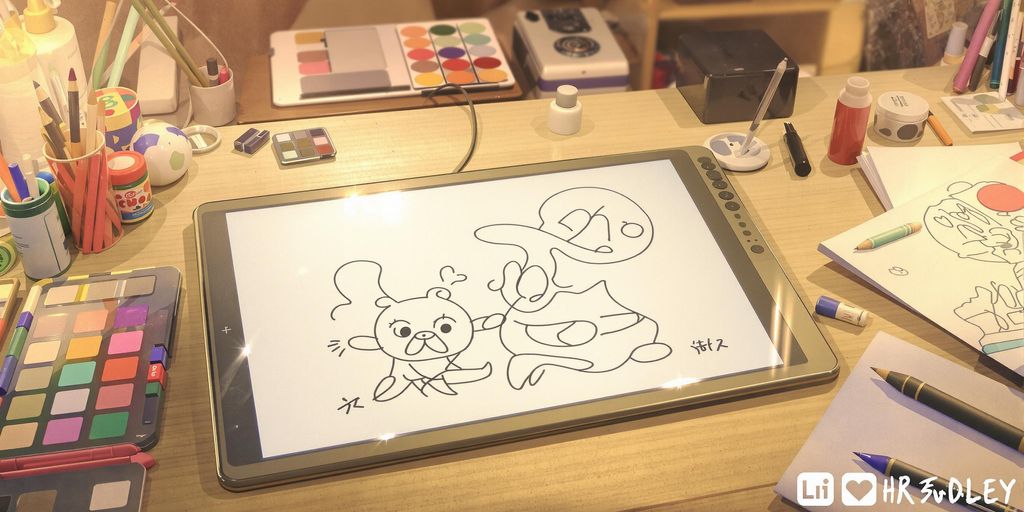What if the key to advancing your career in modern medicine isn’t just clinical skills—but how you organize them? Healthcare initiatives demand more than generic planning strategies. They require leaders who understand patient safety, clinical workflows, and ever-changing regulations. Are you prepared to bridge the gap between administrative goals and life-changing care delivery?
This field blends technical precision with human-centered problem-solving. Unlike traditional roles, success here means navigating electronic health record integrations, vaccine distribution logistics, or telemedicine platform rollouts. Every decision impacts both budgets and patient outcomes.
Top performers combine regulatory knowledge with leadership abilities. They turn chaotic clinical environments into streamlined systems. For example, redesigning emergency department workflows reduced patient wait times by 40% at one Massachusetts hospital—a feat achieved through collaborative process mapping.
Organizations now prioritize professionals who can implement AI diagnostics tools while maintaining HIPAA compliance. These specialists don’t just manage tasks—they drive innovations that shape the future of care. Ready to position yourself for these high-impact roles? Start by optimizing your public health resume to highlight cross-functional coordination skills.
Key Takeaways
- Clinical workflow expertise separates healthcare initiatives from generic projects
- Regulatory compliance (like HIPAA) is non-negotiable in medical settings
- Technology implementation skills boost operational efficiency metrics
- Leadership roles require balancing budgets with patient outcome goals
- Career growth spans hospitals, pharma, and health tech startups
Understanding the Role of a Healthcare Project manager
In medical settings, coordinators act as multilingual translators between technical teams and care providers. You’ll align EHR upgrades with nurse workflows or turn regulatory updates into actionable staff checklists. Recent studies show 73% of successful initiatives depend on this cross-functional communication.
Your day might involve mapping vaccine distribution timelines while addressing supply chain gaps. Unlike generic planners, you’ll prioritize patient safety metrics alongside budget constraints. For instance, one coordinator redesigned medication reconciliation processes, cutting errors by 28% in a Florida clinic network.
Top performers master three layers: clinical protocols, compliance frameworks, and stakeholder management. PIH Health’s job postings emphasize negotiation skills for resolving conflicts between departments. You’ll need to present data-driven solutions to executives while explaining operational changes to frontline teams.
Adaptability separates adequate performers from industry leaders. When telemedicine regulations shifted in 2023, agile professionals reworked implementation plans in 48 hours. Your toolkit should include resume optimization strategies to showcase these dynamic capabilities to employers.
Developing Project Management Skills in Healthcare
Mastering coordination in clinical environments requires merging technical expertise with operational strategy. Start by immersing yourself in frontline care delivery—this firsthand knowledge becomes your compass when aligning team priorities.

Building a Solid Foundation with Clinical Experience
Real-world care settings teach you workflow pain points textbooks can’t. PIH Health’s requirements—like active RN licenses and acute care experience—highlight why employers value practitioners who’ve administered treatments themselves. You’ll identify bottlenecks in medication reconciliation or EHR documentation that outsiders might miss.
Credibility grows when you speak clinicians’ language. A nurse-turned-coordinator redesigned shift handoff protocols at a Texas hospital, reducing miscommunication errors by 34%. These improvements stem from understanding both policy manuals and stethoscopes.
Strengthening Leadership and Strategic Abilities
Effective leadership in medical settings means resolving conflicts through data, not hierarchy. Develop these four competencies:
- Translating regulatory updates into staff workflows
- Mediating between finance teams and care providers
- Presenting ROI analyses for technology investments
- Mentoring junior staff on compliance protocols
Certifications like PMP or healthcare-specific credentials validate your strategic capabilities. Pair these with tools like RoboApply’s clinical trial resume builder to showcase quantifiable achievements.
Continuous learning keeps pace with telemedicine advancements and AI diagnostics. Schedule quarterly workshops with IT and clinical teams to bridge knowledge gaps—this cross-training prevents silos during system upgrades.
Leveraging Technology for Efficient Healthcare Projects
Modern medical initiatives succeed when tools amplify human expertise. Systems like EHR platforms form the backbone of daily operations—mastering them lets you track treatment histories while maintaining compliance. At PIH Health, specialists use clinical decision support tools to flag medication conflicts automatically, reducing prescription errors by 19% in recent trials.
Integrating Modern Healthcare Technology
Start by mapping existing workflows before introducing new systems. A Midwest clinic cut patient discharge times by 25% after aligning their EHR updates with nurse shift patterns. This approach ensures technology supports staff rather than complicating routines.
Specialized software helps manage complex timelines across departments. Solutions like those discussed in optimized coordination frameworks automate compliance tracking and resource allocation. You’ll maintain audit-ready documentation while coordinating lab teams and surgeons.
Emerging tools create fresh opportunities. Telemedicine platforms now handle 43% of routine consultations in rural areas, freeing beds for critical cases. Mobile health apps let patients share real-time data, enabling faster treatment adjustments. Prepare for these shifts with the strategic career planning methods top administrators use.
Successful adoption requires hands-on training. One hospital reduced staff resistance to AI diagnostics by hosting “tech sandbox” sessions where teams tested tools in low-stakes scenarios. Pair these efforts with clear metrics—like reduced wait times or improved accuracy rates—to demonstrate value.
Effective Communication Strategies in Healthcare
Clear information exchange determines whether medical initiatives succeed or stall. You’ll translate technical details into actionable steps for surgeons, administrators, and support staff—each group needing tailored explanations. PIH Health emphasizes this skill in job postings, requiring professionals who balance negotiation tactics with compliance awareness.
Adapt your messaging format to audience needs. Use dashboards with color-coded metrics for executives reviewing budget impacts. Create simplified checklists for nurses implementing new EHR protocols. As highlighted in communication research, visual tools reduce misunderstandings by 41% in clinical settings.
Master three critical scenarios:
- Presenting timeline changes to resistant department heads
- Explaining quality improvement mandates to overworked teams
- Updating stakeholders during supply chain disruptions
Develop crisis protocols before emergencies strike. When vaccine storage failed at a Midwest clinic last winter, prepared coordinators used pre-written templates to notify staff and patients within 90 minutes. This proactive approach maintains trust during operational chaos.
Prioritize active listening during conflict resolution. A recent study found teams resolving disputes 27% faster when leaders paraphrase concerns before proposing solutions. Pair this technique with data-driven arguments to align diverse priorities across departments.
Utilizing RoboApply to Streamline Applications
What separates qualified candidates from those landing top roles? Often, it’s not just experience—it’s how you present it. RoboApply’s tools transform tedious application processes into strategic career moves. One user reported: “I went from 3 interviews a month to 12 after optimizing my materials.”

Exploring the AI Resume and Cover Letter Builder
The platform’s AI analyzes job descriptions to highlight your most relevant skills. It generates tailored documents in 90 seconds—critical when applying to multiple positions. Clinical leadership experience automatically surfaces when seeking coordinator roles, while compliance expertise takes center stage for regulatory jobs.
Real-world example: A professional increased callback rates by 63% after using the grammar checker to eliminate errors. The system ensures consistent formatting across documents, meeting strict industry standards.
Maximizing the ATS Optimizer and Auto-apply Chrome Extension
RoboApply’s ATS scanner identifies missing keywords from hospital job postings. It suggests improvements like adding “stakeholder alignment” or “budget optimization” phrases. Combined with the auto-apply feature, you can submit 15 quality applications in the time it previously took to craft three.
The job tracker organizes your search visually, showing which applications need follow-ups. Pair this with the interview coach’s healthcare-specific scenarios: “Describe a time you improved patient safety through process changes.” You’ll enter every discussion ready to demonstrate operational impact.
Enhancing Patient Care Through Strategic Project Management
Transform clinical goals into measurable improvements by linking every initiative to safety benchmarks. At PIH Health, teams reduced post-op infections by 18% after aligning EHR upgrades with real-time outcome tracking. Your plans should answer: “How does this change directly benefit those receiving treatment?”
Design initiatives that solve tangible problems. One clinic cut wait times 22% by reorganizing triage workflows using patient feedback. Map each step from admission to discharge—where do delays or confusion occur? Collaborate with nurses and technicians to identify friction points invisible to administrators.
Build data systems that track both clinical metrics and satisfaction scores. Use dashboards showing real-time updates on medication errors or appointment no-shows. These tools help teams spot trends before they escalate—like a Midwest hospital catching staffing gaps during peak flu season.
Integrate community needs into planning. When launching a diabetes management program, one coordinator held focus groups with local patients. Their insights shaped multilingual educational materials, boosting program participation by 37%.
Master regulatory alignment while improving services. Learn how balancing compliance with innovation opens doors to healthcare administrator roles that drive systemic change. Present results using visual reports that connect process tweaks to outcome shifts—executives need clear cause-effect narratives.
Establishing Leadership Within Healthcare Teams
Leading multidisciplinary groups requires translating authority into actionable trust. At PIH Health, coordinators must demonstrate operational accountability while aligning diverse priorities. Your success hinges on creating systems where specialists want to contribute—not just comply.

Building Trust Through Operational Awareness
Start by shadowing staff during peak shifts to identify workflow barriers. Nurses respect leaders who understand their documentation burdens. One coordinator gained buy-in for new triage protocols by first streamlining supply access issues affecting daily routines.
Implement three daily practices:
- 5-minute huddles to surface immediate concerns
- Transparent decision logs explaining protocol changes
- Rotation of meeting facilitation roles across departments
Psychological safety emerges when teams see their input shaping outcomes. Use anonymous feedback tools initially—this lowers barriers for hesitant members. Gradually transition to open forums as trust builds.
Balance competing demands using visual priority matrices. Color-code tasks by patient impact versus urgency. This method helped one clinic reduce departmental conflicts by 41% during EHR transitions. Pair these tools with tailored application materials when seeking roles requiring consensus-building skills.
Mentorship strengthens team capabilities while reinforcing your leadership. Create skill-sharing sessions where senior staff teach new billing software alongside junior members demonstrating AI documentation shortcuts. Recognize contributions publicly through staff meeting highlights or internal newsletters.
Time Management and Prioritization in Healthcare Projects
Juggling urgent patient needs with long-term initiatives separates skilled coordinators from overwhelmed ones. You’ll need systems that adapt when emergencies derail schedules without sacrificing critical deadlines. Leading medical institutions like PIH Health demand professionals who balance competing priorities daily—like aligning vaccine distribution with staff training timelines.

Start by categorizing tasks using clinical impact scoring. A delayed equipment purchase might risk compliance fines, while postponed staff training could directly affect care quality. One team reduced ER wait times by 32% after color-coding tasks based on patient safety risks versus administrative urgency.
Build timelines with built-in flexibility buffers. When rolling out EHR upgrades, successful teams plan for:
- Unplanned system downtime periods
- Staff availability during flu season peaks
- Regulatory review cycles
Use digital tools like Asana or Trello to visualize dependencies across departments. These platforms helped a clinic network manage 17 simultaneous initiatives by tracking prescription refill workflows alongside facility expansion plans.
Establish clear escalation protocols for conflicting demands. Create decision trees that guide teams when surgery schedules clash with mandatory safety audits. Pair these with weekly priority alignment meetings—many organizations resolve 89% of scheduling conflicts through structured dialogue.
Mastering these skills positions you for roles where strategic agility drives both operational efficiency and care outcomes. Ready to showcase your time optimization abilities? Strengthen your application materials with quantifiable examples of deadline management under pressure.
Leveraging Data and Analytics for Informed Decisions
Imagine transforming raw numbers into life-saving strategies. Data-driven approaches let you pinpoint bottlenecks in care delivery while proving your initiatives’ value. For example, analyzing ER wait times might reveal staffing gaps during peak hours—actionable insights that lead to measurable quality improvements.
You’ll learn to convert clinical metrics into clear visual reports. Tools like predictive analytics, as detailed in industry research, help anticipate equipment shortages before they delay treatments. This skill turns abstract statistics into stories executives support.
Master interpreting patient feedback alongside operational dashboards. One clinic boosted satisfaction scores by 19% after correlating wait times with survey responses. These connections ensure every decision balances efficiency with human impact.
Ready to showcase this expertise? Pair your analytical achievements with tools like those in operations manager roles to demonstrate how data fluency drives real-world outcomes. Your ability to bridge numbers and narratives will define success in modern care environments.
FAQ
What skills are most critical for managing initiatives in medical settings?
You’ll need expertise in workflow optimization, stakeholder collaboration, and regulatory compliance. Technical proficiency with tools like EHR systems and data analytics platforms is equally vital. Strong leadership to align teams with organizational goals ensures project success.
How does clinical background improve outcomes in care delivery projects?
Hands-on experience with patient workflows helps you identify bottlenecks and design solutions that prioritize safety. Understanding frontline challenges allows you to bridge gaps between administrative planning and care team execution.
Can automation tools like RoboApply really streamline job applications?
Absolutely. Platforms like RoboApply’s AI Resume Builder tailor documents to specific roles using industry keywords, while the ATS Optimizer ensures compatibility with tracking systems. The Auto-apply Chrome Extension reduces manual effort by submitting applications directly from job boards.
What strategies ensure effective communication across multidisciplinary teams?
Schedule regular sync-ups using hybrid meeting tools like Zoom or Microsoft Teams. Create shared dashboards for real-time progress tracking, and establish clear escalation paths for resolving conflicts swiftly. Active listening fosters trust and alignment.
How do data-driven approaches enhance decision-making in care initiatives?
Analytics tools like Tableau or Power BI help visualize patient outcomes, resource allocation, and process efficiency. By tracking KPIs like readmission rates or staff productivity, you can justify adjustments and demonstrate ROI to stakeholders.
What’s the best way to balance urgent tasks with long-term goals?
Use prioritization frameworks like Eisenhower Matrix to categorize tasks by impact and urgency. Tools like Asana or Trello provide visibility into deadlines, while buffer time in schedules accommodates unforeseen challenges without derailing timelines.


















